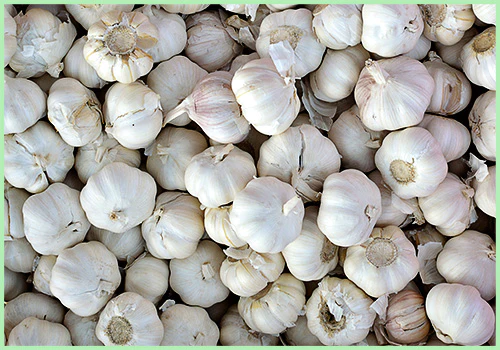Garlic Price High At Rs 400/Kg In Odisha, No Respite For Another 10-15 Days

Bhubaneswar: The price of garlic continues to go up in the state, raising concern among the common man. Sold at Rs 400 per kg now, the price is likely to stay high for another 10-15 days till the Kharif produce arrives.
According to traders, the price has nearly doubled over the last few days in most parts of the country, including Odisha because of dwindling supplies after the crops were damaged due to extreme weather conditions. From being sold at Rs 150 three months ago, it is now being sold at Rs 50 for 100 gm.
Changing climatic conditions, including deficient and irregular monsoon, untimely rains and depleting groundwater level in states producing garlic are the prime reason for the fall in produce which leads to dwindling supply and price rice.
Chhatra Bazaar Traders’ Association Secretary Debendra Sahu said that the old garlic stocks have been exhausted and it will take at least 10-15 days for the new stock to arrive. “Since the supplies have declined, the prices are soaring. The cost will come down only after fresh supplies arrive,” he informed.
Garlic is mostly grown in Karnataka, Madhya Pradesh and Maharashtra both in the summer (Kharif) and winter (Rabi) seasons. Maharashtra alone accounts for nearly 40 per cent of the total production in India. Poor monsoon damaged the Kharif crop in states. Farmers had to plant the crop again in September when the rains picked pace. Due to delayed sowing, harvesting was pushed back and that is straining supplies.
Also unseasonal rainfall caused by Cyclone Michaung in parts of India led to the destruction of a large amount of garlic crops. It led to extreme shortage of garlic doubling the market prices, the Hindustan Times earlier reported.
Farmers are not very optimistic about the next crop as the Rabi crop has lower yield compared to the Kharif crop as the soil has less moisture. Market estimates say that garlic acreage is going to shrink in view of the moisture stress in most growing states. The summer crop is normally stored by farmers to be liquidated in tranches, and lower availability early next year is expected to keep pressure on prices intact for quite some time, stated the Indian Express earlier.

Comments are closed.